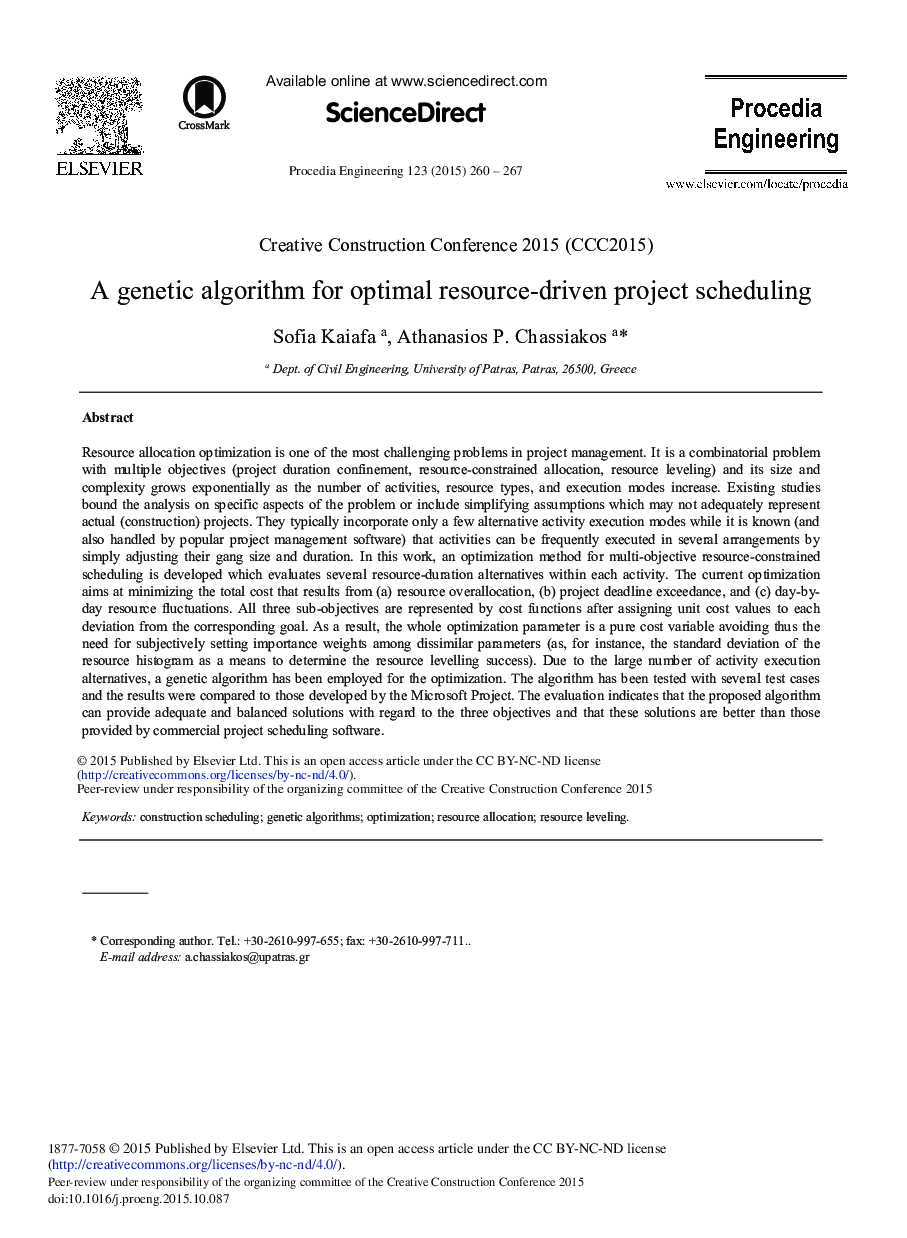| Article ID | Journal | Published Year | Pages | File Type |
|---|---|---|---|---|
| 854980 | Procedia Engineering | 2015 | 8 Pages |
Resource allocation optimization is one of the most challenging problems in project management. It is a combinatorial problem with multiple objectives (project duration confinement, resource-constrained allocation, resource leveling) and its size and complexity grows exponentially as the number of activities, resource types, and execution modes increase. Existing studies bound the analysis on specific aspects of the problem or include simplifying assumptions which may not adequately represent actual (construction) projects. They typically incorporate only a few alternative activity execution modes while it is known (and also handled by popular project management software) that activities can be frequently executed in several arrangements by simply adjusting their gang size and duration. In this work, an optimization method for multi-objective resource-constrained scheduling is developed which evaluates several resource-duration alternatives within each activity. The current optimization aims at minimizing the total cost that results from (a) resource overallocation, (b) project deadline exceedance, and (c) day-by- day resource fluctuations. All three sub-objectives are represented by cost functions after assigning unit cost values to each deviation from the corresponding goal. As a result, the whole optimization parameter is a pure cost variable avoiding thus the need for subjectively setting importance weights among dissimilar parameters (as, for instance, the standard deviation of the resource histogram as a means to determine the resource levelling success). Due to the large number of activity execution alternatives, a genetic algorithm has been employed for the optimization. The algorithm has been tested with several test cases and the results were compared to those developed by the Microsoft Project. The evaluation indicates that the proposed algorithm can provide adequate and balanced solutions with regard to the three objectives and that these solutions are better than those provided by commercial project scheduling software.
